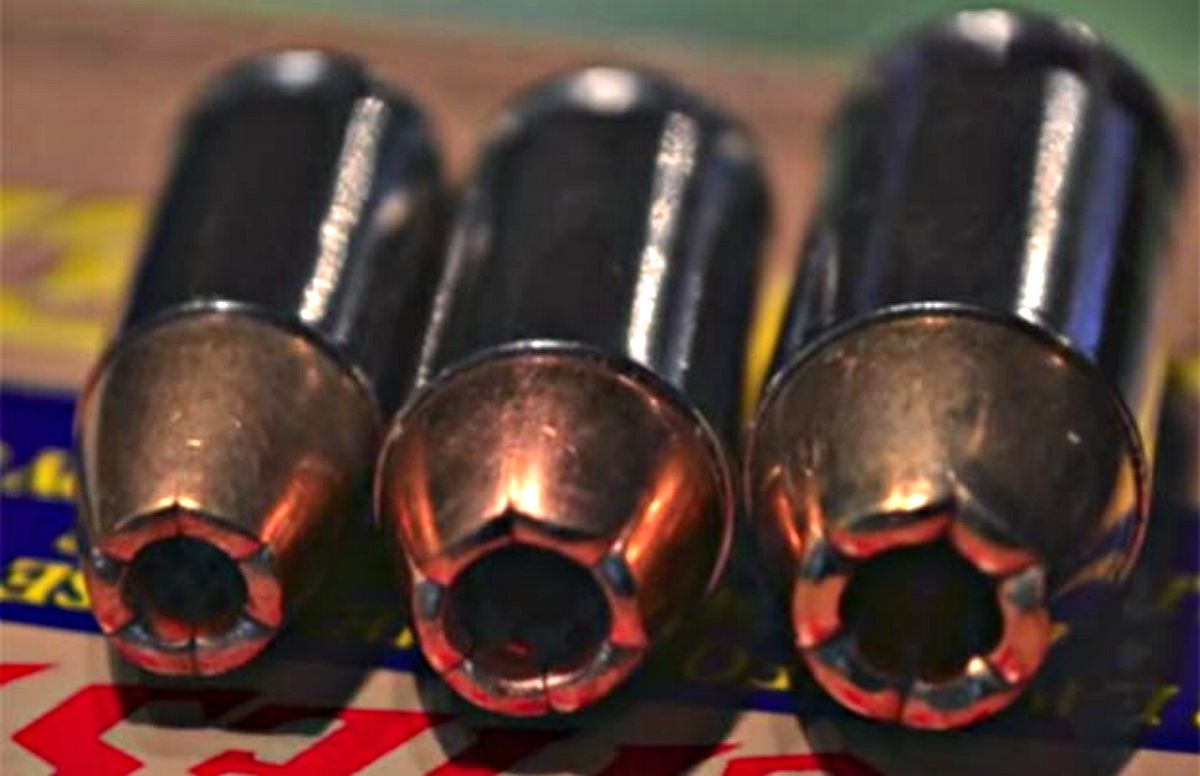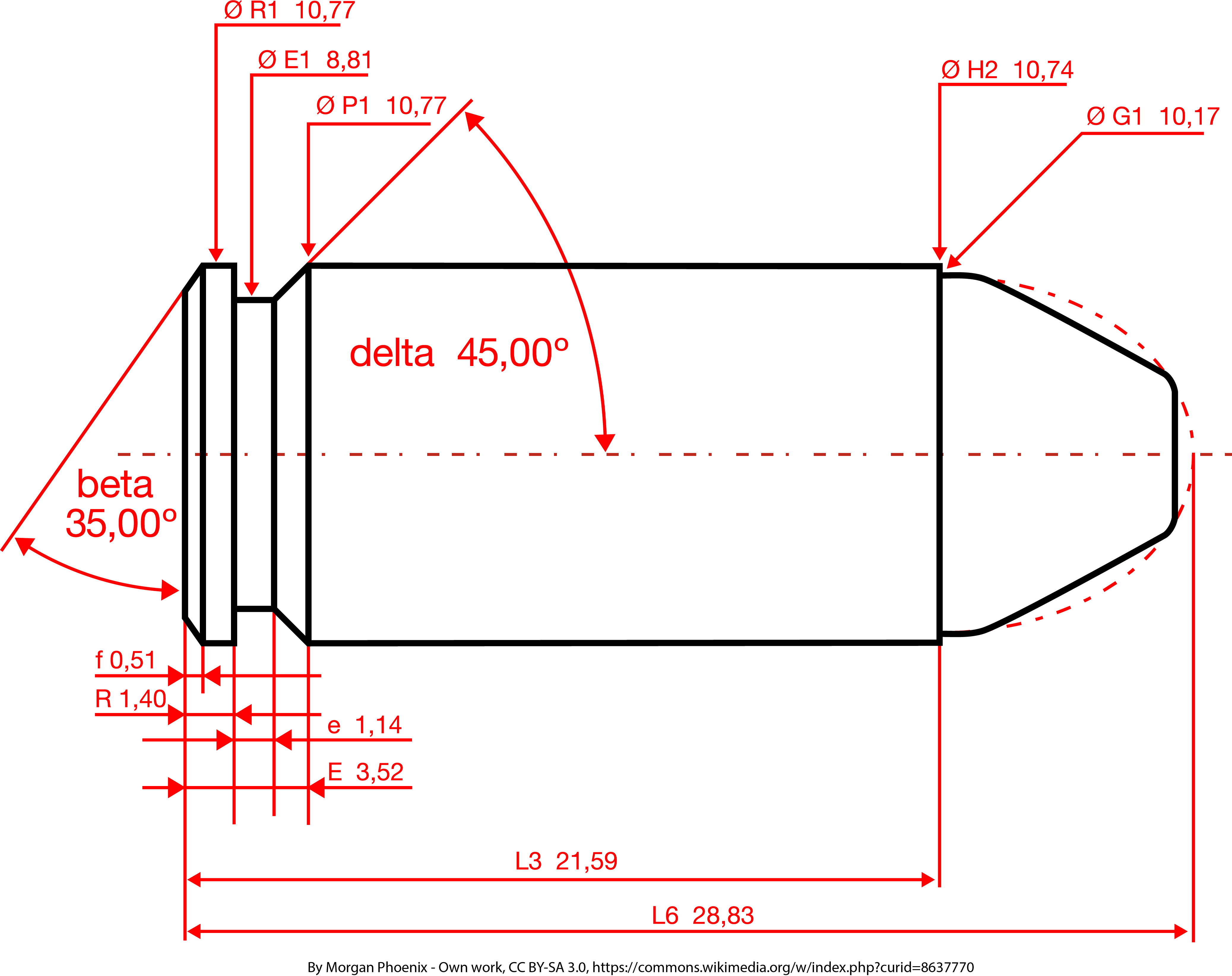
The primary argument over the years was between the 9mm and the .45 ACP, and which was the best round for self-defense. Now, we see continuing arguments between the 9mm, .40 Smith and Wesson, and the .45 ACP with all vying for top defensive slot. Then, throw in a touch of 10mm and the mixture gets even crazier.
We all know the history of the .40 Smith and Wesson and why it even exist. If you don’t, please stop in at https://en.wikipedia.org/wiki/.40_S%26W to pick up some background on the cartridge.
Most everyone that I have discussed the .40 Smith and Wesson with tell me simply to forget it and go to the 10mm which is a much more powerful round, when loaded to a true 10mm, whatever a true 10mm is.
Unlike the 9mm kürz, which is considered by most as the minimum cartridge for self-defense, the 40 Smith and Wesson, which could be referred to as the 10mm kürz, is a viable self-defense round. With a maximum case pressure of 35,000 psi (240 MPa), you know that you are dealing with a serious cartridge. With bullet weights that intrude in the 9mm range, for example, the Cor Bon 135-grain JHP and up and into the classic .45 ACP range like the 200 gr Doubletap FMJ FP, the 10mm short is nothing to sneer at. For example, the Cor Bon 135-grain JHP in .40 Smith & Wesson generates a velocity of 1350 feet per second and the 200-grain Doubletap FMJ FP in the same caliber generates 1,050 feet per second at the muzzle. Those are not bad figures, although far from perfect for the cartridge, in my humble opinion.
The major complaint, from what I understand, with the 10mm was that many of the F.B.I agents could not handle the recoil. Thus, the .40 Smith and Wesson cartridge was born. Now it seems the complain against the .40 Smith and Wesson is that some F.B.I agents could cannot handle the recoil of this cartridge; moreover, with recent advances in 9mm cartridge ballistics and design, the agency is returning to the 9mm cartridge. This may lead to a slowdown in bettering the .40 Smith & Wesson cartridge and the 10mm cartridge that is starting to see a resurgence in popularity. However, how many advances have we seen to improve the .38 Special or .357 Magnum cartridges, or the .44 Special and .44 Magnum cartridges, let alone the .45 Colt, the .41 Magnum, the…?
In .45 ACP, the velocity of the Hornady Std P 185 gr. FTX Critical Defense is 1,041 feet per second out of a 5″ barrel. In .40 Smith and Wesson, the velocity of the Federal 180 gr. Hydra-Shok JHP is 1,051 feet per second out of a 5” barrel. The felt recoil from both cartridges are nearly the same in the same style pistol. The recoil from the Federal 180 gr. Hydra-Shok JHP was just a bit sharper. The Federal 180 gr. Hydra-Shok JHP was fired from a Rock Island Armory 1911 Rock Ultra FS chambered in .40 Smith and Wesson (weight loaded 2.87 pounds) and the Federal 180 gr. Hydra-Shok JHP was fired from a Rock Island Armory 1911 Rock Ultra FS chambered in .45 ACP (weight loaded 2.87 pounds). Both pistols hold 8+1 rounds of ammunition and the pistols are nearly identical in every way.
One of my favorite defense cartridges to fire out of a 1911 pistol is the Sig-Sauer Elite V-Crown ammunition. The 40S&W, 180GR, Elite V-Crown, JHP has a velocity of 985 feet per second at the muzzle; a bit lower than the Federal Hydra-Shok, but the Sig Sauer ammunition has proven to be extremely accurate out of most of my 1911 pistols. And accuracy counts for something. The Federal 180 gr. Hydra-Shok JHP did not give me the same accuracy. You have to poke the holes in the right places and that is the only way to instantly incapacitate an attacker.

With all else being equal, a heavy bullet will always penetrate deeper than a lighter bullet. For that reason, I would carry the 180-grain fodder in the .40 Smith & Wesson.
Putting some incapacitation data into a table:
| 9mm | 40 S&W | 45 ACP | |
| Avg. number of rounds until incapacitation | 2.45 | 2.36 | 2.08 |
| % of people who were not incapacitated | 13% | 13% | 14% |
| Percent actually incapacitated by one shot (torso or head hit) | 47% | 52% | 51% |
While the above shows that there is really little difference between popular defensive cartridges, what it does show is that the .40 Smith & Wesson holds its own with the more popular defense cartridges. So, the .40 Smith & Wesson is not going anywhere soon; it is just another cartridge.
Platforms
As of the time of this writing, there are more shooting platforms for the .40 Smith & Wesson than you can shake a stick at. For my first excursion into the .40 Smith & Wesson, the Springfield Armory XDm40 4.5. A Rock Island Armory 1911 FS Ultra soon followed (review pending). The XDm40 4.5 has an occupancy of 16+1 rounds; whereas the RIA Ultra simply houses 8+1. With a little web research, you can find a pistol that will shoot this cartridge from just about every major pistol manufacturer.
Although Smith & Wesson Model had the Model 4006 pistol, which debuted with the cartridge, the Glock 20 was the first to reach the shelves and it remains a popular choice for launching this projectile, if not the most popular pistol. In 1911 pistols, the field is limited. Kimber used to make a few ‘40s’ but they are no longer listed on their website. Springfield Armory has the 1911 EMP® .40SW, the 1911 EMP® 4” Champion™ .40SW, and the 1911 EMP® 4” Concealed Carry Contour .40SW. Aside from the 1911’s, Springfield armory also has: XD-S Mod.2® 3.3″ Single Stack .40SW, XD® MOD.2® 4″ Service Model .40SW, XD® 4″ Full Size Model .40SW Bi-Tone, XD® 3″ Sub-Compact .40SW Bi-Tone, XD-S® 3.3″ Single Stack .40SW.
The Rock Island Armory 1911 Rock Ultra FS chambered in .45 ACP was mentioned earlier. Glock, of course, has the G22, G23, G24, G27, and G35. Then you have CZ, H&K, Smith & Wesson, and a wide variety of others.
Without going further, if you are serious about carrying a pistol to house the cartridge, there are plenty to choose from.
Summary

Is the .40 Smith & Wesson going away? Not hardly! I would like to see; however, some more R&D go into the round. The cartridge is still in its infancy, only being in existence since 1990. At the Midway USA website, there are 78 selections of .40 Smith & Wesson to choose from. At Cheaper Than Dirt, there are 205 selections to choose from. At Lucky Gunner, there are 159 selections. Surely, you can find a cartridge to suit your needs for defense, competition, target, or hunting.
The .40 Smith & Wesson just isn’t quite where I think it can be. It is just going to take some tweaking. In fact, the 10mm isn’t quite there yet, but I will say that it is close. My favorite bullet weight for the 1911 is 230-grain at around 830 to 850 feet per second. The 10mm DoubleTap Ammunition 10MM230HC DT Hunter 10mm Automatic 230 GR Hard Cast can be pushed at 1125 feet per second. That’s cooking! There is no 230-grain bullet in the .40 Smith & Wesson menu, there is; however, a .45 ACP 230 grain +P cartridge that is good for 950 feet per second. Now, that’s good enough for personal defense and that’s where the .40 Smith & Wesson needs to be so that us 1911 folks will quit battering the heck out of our fine 1911 pistols.
So, you might have figured out that I am having some fun with the .40 Smith & Wesson cartridge. I do like the cartridge, and I do like the 10mm cartridge. I am just trying to figure where they fit in the grand defensive ammunition scheme of mine, or if they ever will.
I would pack a .40 Smith & Wesson over the 9mm. I would pack a 10mm over the .40 Smith & Wesson. But I would pack my 11.43mm over both, because I am more familiar with the cartridge and the pistol that shoots it. And it’s hard to tug your heartstrings away from something that you are familiar and comfortable with; like a good woman, a fine horse, or an excellent hunting dog (not necessarily in that order).
![]()

